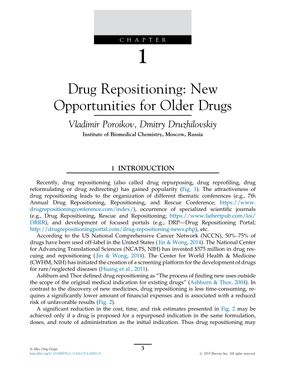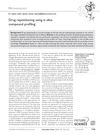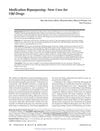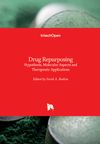Drug Repositioning: New Opportunities for Older Drugs
January 2019
in “
Elsevier eBooks
”

TLDR Finding new uses for existing drugs is promising and can lead to safer, more effective medicines.
The document from 2019 discusses drug repositioning, which is the process of finding new medical uses for existing drugs, highlighting its advantages such as reduced time, cost, and risk compared to developing new drugs. It notes that hundreds of drugs have been repurposed, like Aspirin and Zidovudine, and emphasizes the need for careful analysis and validation through clinical trials. The document also covers strategies for drug repositioning, including serendipity, text mining, and observing unexpected side effects, with examples like sildenafil's shift from treating angina to erectile dysfunction. It discusses the use of databases, computational methods, and systems pharmacology to discover new drug-target interactions and disease-pathway-target relationships. The importance of computational tools is emphasized due to the impracticality of testing numerous molecules against many targets. The paper concludes that integrating existing information and community efforts are crucial for successful drug repositioning, which will lead to safer and more effective medicines, supported by the RSF-DST Grant No. 16-45-02012-INT/RUS/RSF/12.


